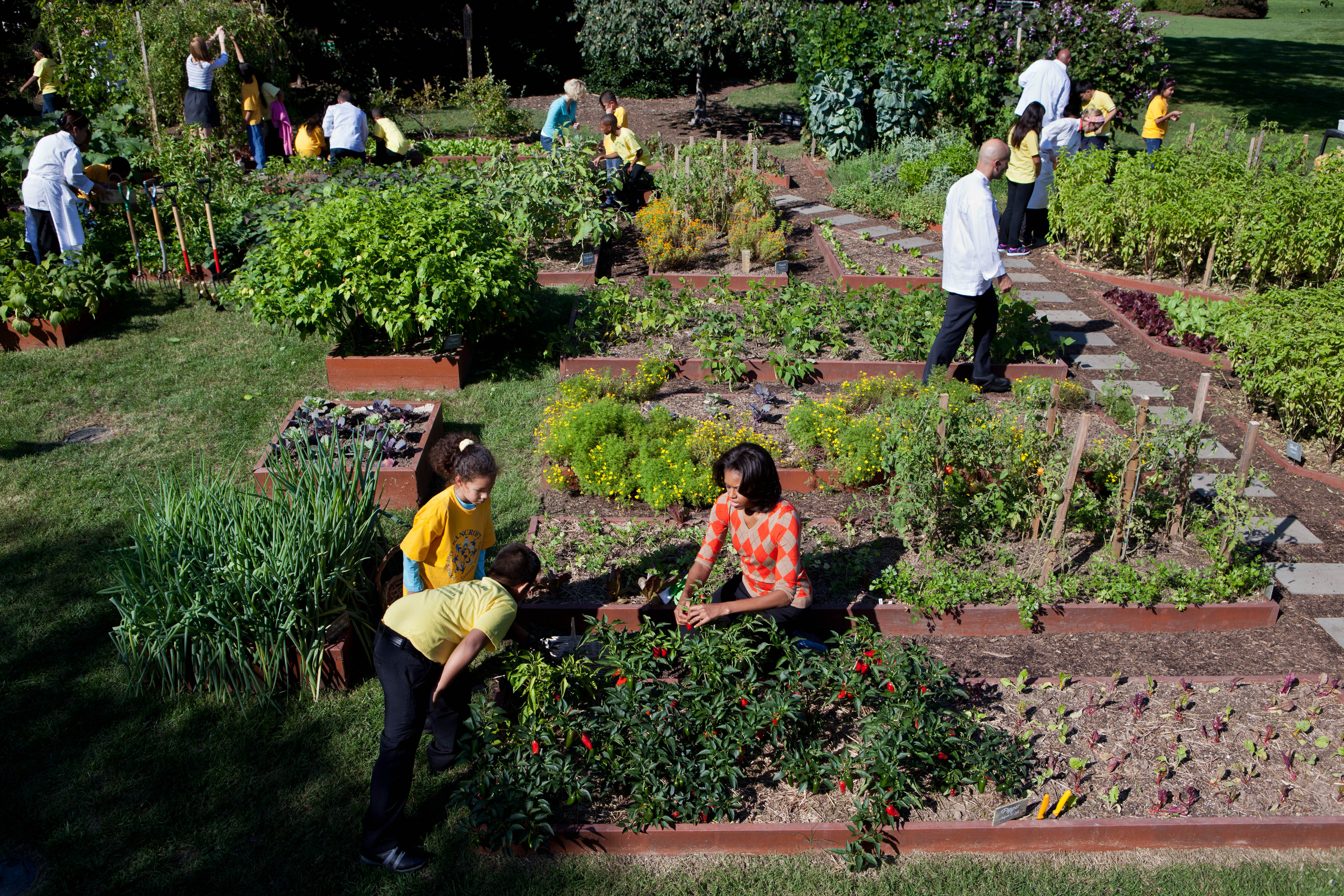In 2009, First Lady, Michelle Obama got together with a host of kids from a local elementary school to begin planting a kitchen garden. The term “kitchen garden” is becoming common among many families and communities. These types of gardens provide a wide variety of produce that a household will use for their everyday cooking and meal planning. The idea of having a kitchen garden at the White House is an innovative idea that has spread across the United States. Although this particular garden has a specific focus and that focus is to provide healthy meals for the First Family along with guests attending events at the White House, the very first garden on the property was former First Lady, Eleanor Roosevelt’s Victory Garden in honor of World War II. First Lady Obama was inspired by Eleanor Roosevelt’s idea combined with her passion for raising a healthier nation.
Getting elementary age children involved is also an important part of this mission. Many children living in metropolitan areas such as Washington, DC, are not exposed to fresh produce and are not even aware of where their food comes from, let alone how it grows. The experience, like within other communities across the nation, is beneficial to small children, so that fresh fruits and vegetables become a part of their lives while their still young. The White House kitchen garden continues to give back to the community by donating food to Miriam’s Kitchen, a place near the White House where the homeless can sit down and enjoy a warm meal. Washington, DC is a melting pot of power and wealth that sits side by side with poverty. The White House kitchen garden teaches the children not only how to grow and nurture fresh foods but also that giving to those less fortunate is vital to the survival of a community.
Though gardening can be overwhelming if you’ve never done it before, you can start with one plant at a time. Kitchen gardens are based on the idea that you will plant and grow what you eat, or there could be an issue of waste. Most kitchen gardens don’t require the amount of land that they have access to at the White House, so if you have space in your front or backyard or even a windowsill, let’s get started!
If you are a city dweller, you may be hesitant at the idea of starting a garden. There will be all manner of questions, such as, where would I put a garden and just how much can I grow in a small space? Here are a few ideas to get you started.
- Container gardens are a great option for those living in apartments. There will be a huge variety of choices at your local home store or plant nursery. You may even find containers at home you can use, like gallon milk jugs or empty salad bar containers from the grocery store. However, if you have neither, garden containers are pretty economical to purchase. Your best bet is to begin with one container and one vegetable that you cook and eat often. This is a way to see if you’re really going to stick with the idea of a kitchen garden or not. Container gardens can sit on a windowsill or a window seat, a patio or small porch.
- Vertical gardening is another modern option for city dwellers or those living the country life but still have little outdoor space to spare. These vertical gardens can also act as walls of separation in a loft apartment. They look a bit like huge wine racks but with space enough in each cupboard to hold a potted plant.
- If you are a country dweller or live in the suburbs where you do have access to a good bit of yard space, you still cannot assume that your soil and environment are ideal for growing a kitchen garden. You also have the option of beginning with container gardening, vertical gardening racks, or choosing a small area in your yard while you do your research. Decide what you want to grow, what kind of soil is best, (which most any employee in a home and garden store should be able to answer), and start out small. Choose two or three plants at the most, so you can see if you’ve chosen the right area of your yard or if during the next season you may need to abandon that area and start again from scratch. Gardening can be a lot like art; sometimes we have to crumble up the paper and begin again.
The best thing to know about starting your own kitchen garden is that if you are a beginner, you will need patience and perseverance to get through your first season. Your first season of gardening will be like a training ground and this test will show you which fruits, vegetables, and legumes will thrive in your area. Your kitchen garden doesn’t need to be as grand as that of the White House, it simply needs to suit the nutritional needs of you and your family. So remember to have fun and look for inspiration, such as pics of the White House garden or other gardening sites that walk you through the process of creating a garden you will use and love.
Sources: The Kitchen Garden, A Starter Guide to Urban Gardening
